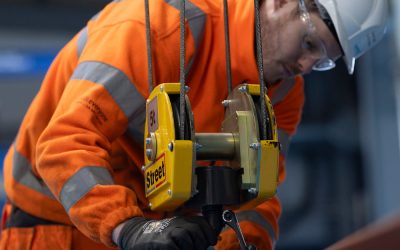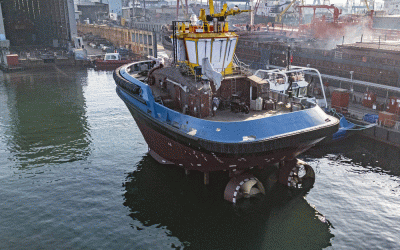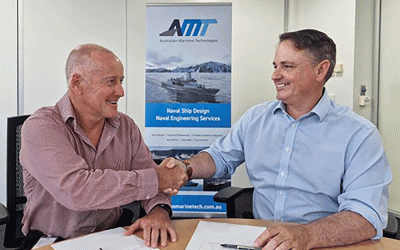Norwegian shipbuilder Fjellstrand has started construction of the all-electric passenger catamaran ferry Medstraum, developed by partners in the Transport – Advanced and Modular (TrAM) project (for more on the background to this project, see Ship & Boat International July/August 2020, pages 10-11). The yard hopes to have the vessel in service in spring 2022, when it will commence a trial commuter service between the city of Stavanger and its surrounding islands.
The 31m x 9m ferry will have the capacity for around 150 passengers and will draw on a 1.5MWh battery with a charging power of more than 2MW to power a pair of electric motors. The TrAM partners – who include Fjellstrand, Servogear, Wärtsilä and the Hamburg Ship Model Basin (HSVA), among others – have estimated that the ferry should have a service speed of 23knots. Servogear will equip Medstraum with its Ecoflow Propulsor system.
Both the hull and superstructure will be built in aluminum, and the modular nature of the vessel (ibid.) is expected to reduce electric ferry production costs by 25%, while slashing engineering hours by a massive 70% – benefits that could see its adoption by smaller boatyards and/or boatbuilders juggling budgets. The modules of the ferry are being supplied by Norwegian partner Leirvik.
The TrAM project was initiated by industry cluster organisation NCE Maritime CleanTech and is being coordinated by Kolumbus, an independent mobility services division of Rogaland County Council, Norway. Kolumbus will also own and operate the completed ferry. In addition to the €11.7 million (US$13.9 million) of funding received from the EU’s Horizon2020 research and innovation programme, the TrAM partners have benefited from a NOK68 million (US$7.9 million) contribution from Rogaland County Council, plus a contribution from the Research Council of Norway.
Beyond Medstraum, the TrAM project plans to develop two ‘replicator’ vessels: one for the Uber Boat by Thames Clippers service, launched in 2020, which provides waterborne Uber services on the River Thames, London; and the other for Belgium’s De Vlamsee Waterveg, which will be deployed on the country’s inland waterways.




